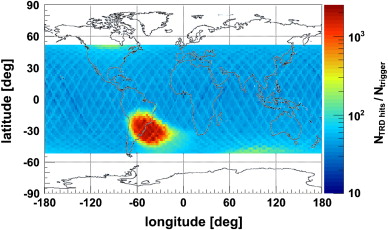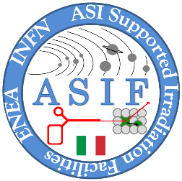There is a major asymmetry in the near Earth, known as the South Atlantic Anomaly, or SAA. This is a region where the field is much weaker that at other longitudes. Thus an orbiting trapped particle must go deeper into the atmosphere to reach a particular mirror point or \(B_{m}\) determined by the equatorial pitch angle. The net result is an increase in the magnitude of the loss cone as the particle drifts across the longitudes corresponding to the SAA. This is the ultimate sink for inner zone radiation belt particles. The SAA is a region where the offset and the tilt of the geomagnetic axis with respect to the Earth's rotation axis brings in the lower edge of the inner radiation belts to lower altitudes over the SAA. For altitude below \(800 \: Km\) and inclination below \(40^{\circ}\), the SAA dominates the spacecraft radiation environment, although at high latitude the outer belts are encountered. In this region the fluxes are extremely variable with altitude, because of the interaction in the upper atmosphere layers wich absorb particles.The resulting large spatial gradients are difficult to model accurately, because small errors in \(B\) or \(L\) coordinates car result in large flux changes. Moreover they cause anisotropy of the trapped particle fluxes. At a given point the guiding centers moving from west to east are located below that point. Therefore particles coming from west experience denser regions of the atmosphere and are more easily absorbed. The effect is most important at hiogh energies, where gyroradii are large and therefore the difference in altitude of the guiding center is larger. At \(400 \: Km\) of altitude we can have an east-west ratio of a factor 4 at \(200 \: MeV\). This anysotropy is linked to the atmosphere density and solar cycle dependence.

The SAA from AMS-02 TRD counts


